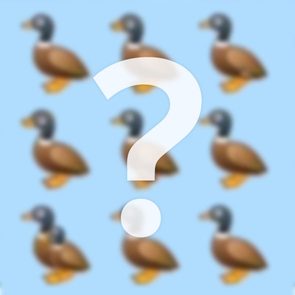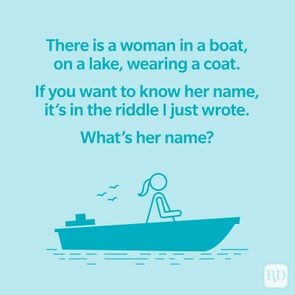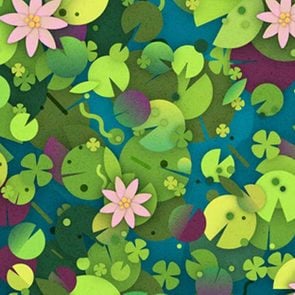“Green Glass Door” Riddle: Try to Solve the Classic Riddle
Updated: Mar. 12, 2024

What's allowed through the green glass door? Grab some friends and challenge them with this classic brain-teasing riddle.
Riddles offer a playful challenge to make sense of the seemingly nonsensical. And whether we’re talking hard riddles or easy riddles, we humans tend to eat ’em up. That’s because our brains are hard-wired to identify patterns in whatever the world throws at us, which can often seem quite random. The “green glass door” riddle is a classic example that remains popular because it’s good fun for both kids and adults at parties or in the classroom. Moreover, it lends itself to virtually endless variations—in other words, the “green glass door” riddle never gets old.
Unlike the all-time favorite “what am I? riddles,” the “green glass door” riddle asks you to consider not what something is but rather what a whole litany of things have in common. The object of the “green glass door” riddle is for the participants to identify what can be brought through the door—and what is not allowed.
To get a flavor for the riddle, start your creative engines. Imagine a world where there’s no internet, and yet you can still use Google. Cell phones are all the rage, but tablets are verboten. There are books, but no paper, and for that matter, no writers. That is how life is beyond the metaphorical “green glass door,” where lots of things simply are not permissible. Oh, and the thing about the green glass door is that although it’s green, it could also be yellow, but never red or blue. Confused? Here’s how to play.
How to play the “green glass door” riddle
“There’s a green glass door, and some things can go through it, and some things cannot,” says the riddler. The riddler then offers up a pair of something that establishes the pattern. The pair is related in some obvious way, but only one thing in each pair meets the green glass door standard. The riddler can then offer up more pairs as clues. Then, it’s up to the players to figure out what that standard is.
“Green glass door” riddle examples
- “There’s a green glass door, and you can come through it with a carton of eggs, but not with a box of doughnuts.”
- “There’s a green glass door, and you can come through it with a gallon of skim milk, but not a quart of the stuff.”
- “Do you like houseplants? There’s a green glass door, and you can come through it with bamboo, but not jade, orchids, philodendron or ivy.”
- “There’s a green glass door, and sadly, dogs and cats can’t go—unless they’re still puppies and kittens.”
- “There’s a green glass door, and under no circumstances can your pet bird go through—with the notable exception of parrots and parakeets. But macaws? They’re a no. Same with doves and canaries.”
If you’re a participant, and you think you know the solution, pipe up! Just remember to express it in the same form as the riddle itself. For example, you might say, “Aha! So toddlers can come through, but not babies?” That way, if there are multiple participants, the game can continue even after one of you solves the riddle.
The hint
Before we give away the solution, here’s one hint: The key to solving the “green glass door” riddle can be found in all four of the words that make up the phrase “green glass door riddle.”
The solution
Did the hint give it away? What do the four words in “green glass door riddle” have in common? That would be the presence of double letters. If something is spelled with double letters, it can go through the green glass door. If there are no double letters in its name, then it can’t.
To review, you can bring a game of Scrabble through the green glass door, but not Monopoly. Likewise, the new and highly addictive online word game Connections is welcome, but Wordle, alas, is not.
The “green glass door” variations
One of the best things about the “green glass door” riddle is that it offers brain-teasing entertainment in any number of settings. It’s just a matter of tweaking the proceedings, including the consequences for wrong answers. For example, it could be used as a riddle for teens in a structured setting, such as a classroom. There, a wrong answer could eliminate the player who offered it (kind of like how a spelling bee works).
In a social setting, a wrong answer could require the player who offered it to perform a task of some sort. The type of task will, of course, depend upon the context. For example, if you’re playing with your workout buddies, a wrong answer might require a number of push-ups. In the context of a cocktail party, a wrong answer could come at the price of a dare.
Other solutions
The one downside of the game is that once everyone knows what it takes to get through the green glass door, it’s game over. However, another solution, so to speak, could be to appoint a new riddler to make up a new rule for getting through the metaphorical door. Like, only objects that require batteries (laptops but not desktops) or only words containing the letter “w” somewhere within.
Of course, when you’re out of new ideas, you can always break out these math riddles. Or challenge the group to answer a few logic puzzles or these animal trivia questions.
Source:
- PsychCentral: “All About Apophenia”



